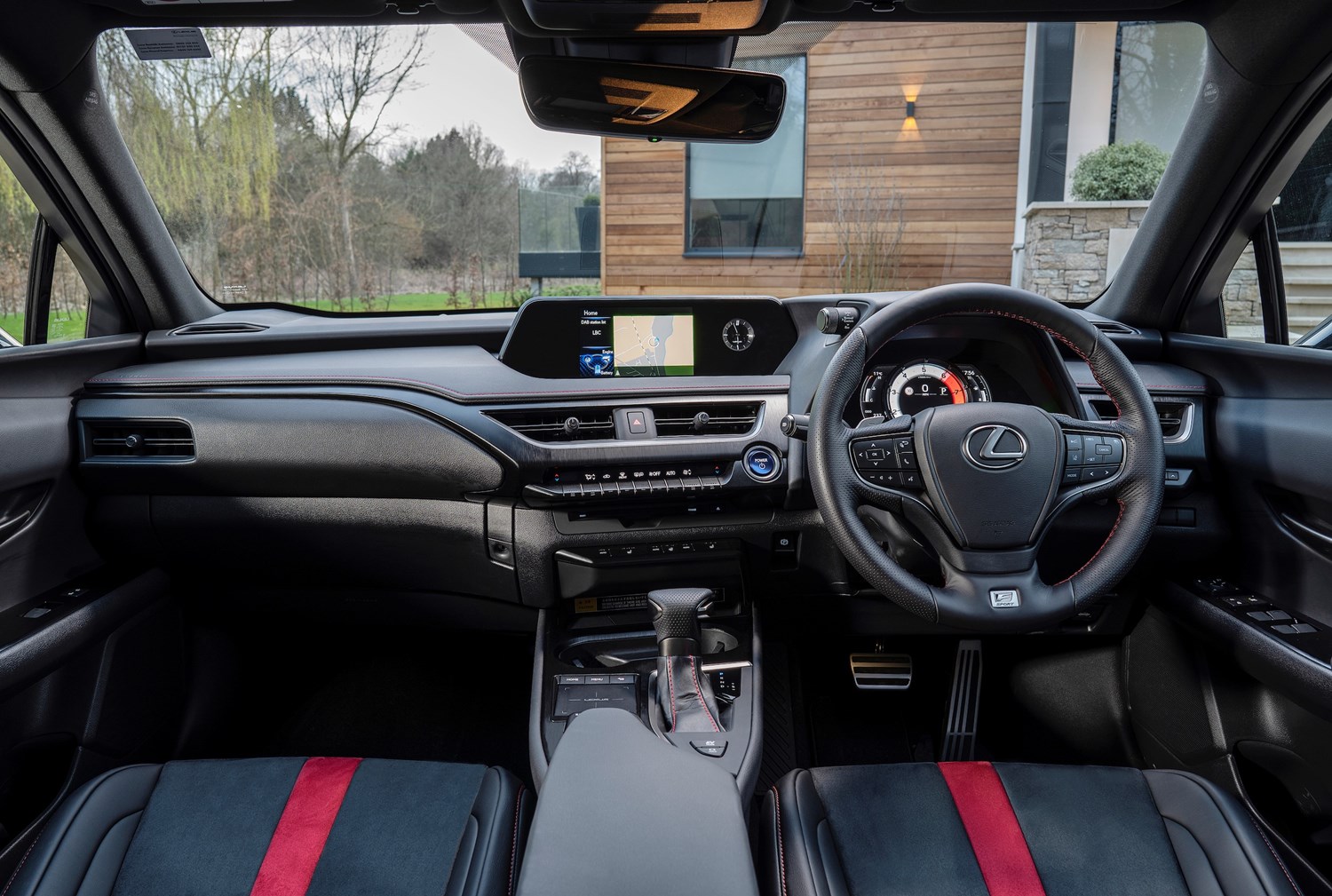Latest model
Despite only being around for a short period of time, the UX would receive big updates for 2021. The key addition is the difference of a new electric model – the UX 300e. It’s the brand’s first production EV, boasting a 196-mile electric range from its 54.3kWh battery and 150kW electric motor.
Other changes for 2021 include a new Premium Sport Edition grade, which features a black styling kit on the exterior and additional safety kit in the form of blind spot monitoring and rear cross traffic alert.
Value for money
Prices for the UX kick off from just under £30,000, which makes the UX decent value for money compared to rivals, though is more expensive than the Volvo XC40. Standard equipment is also reasonable, and includes 17-inch alloy wheels, LED headlights and a suite of safety kit. As you go up the trims, though, the prices rise significantly, while you’ll need to spend a significant £38,000 if you want a four-wheel-drive model. The new electric model also costs £40,900, too, which most certainly isn’t cheap.
Despite the UX only arriving in dealerships in 2019, though, used models are already available at noticeable discounts. Prices start from around £24,000, which will buy a one-year-old car with around 10,000 miles on the clock.
Looks and image
Lexus design has certainly taken a brave pill in recent years when it comes to its design, and the UX is arguably one of the brand’s boldest creations in modern times. Featuring a particularly angular design, huge front grille and LED rear light bar, this crossover certainly stands out from the crowd. You might argue the design is a bit over the top, with the oddly-shaped wheel arch surrounds giving it a particularly unusual look, but Lexus should still be applauded for doing things a little differently.
The interior is a touch more conservative, with the familiar Lexus design featuring. There are quite a lot of buttons to contend with by modern standards, and the infotainment system doesn’t work as well as rivals – and the touchpad you operate it with is fiddly – though it’s smart, clean and feels reassuringly upmarket and built to last. Apple CarPlay and Android Auto are also both included as a recent addition to the UX.
The UX also delivers behind the wheel, as with a low-slung seating position compared to some rivals, it feels more like a hatchback to drive than it does an SUV. It’s grippy, has accurate steering and doesn’t lean through the corners in the same way you expect. Yet it continues to remain comfortable, with one of the few gripes being that the engine can be quite vocal, namely due to the CVT automatic gearbox utilised. The electric model also impresses, too, while not having the same engine refinement issues due to its silent electric motor.




